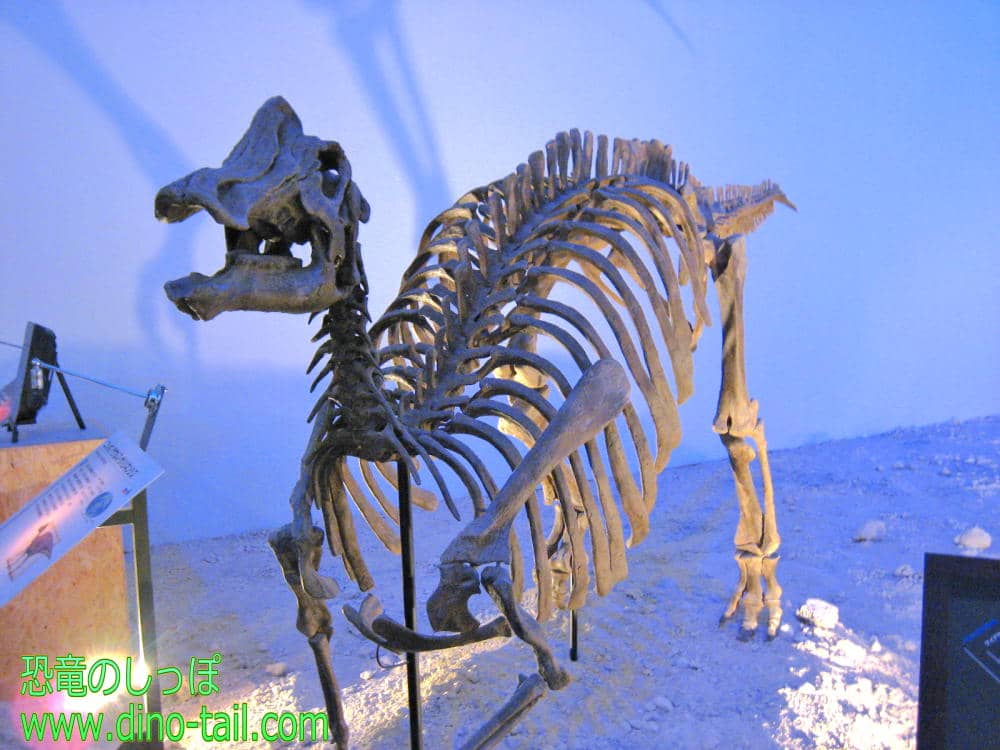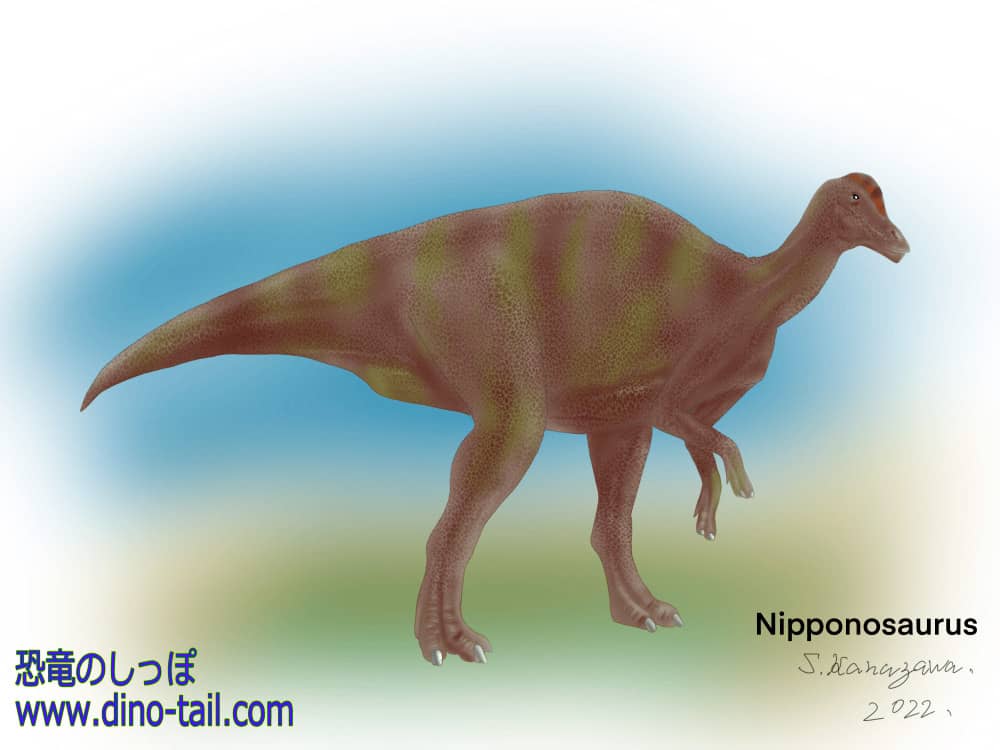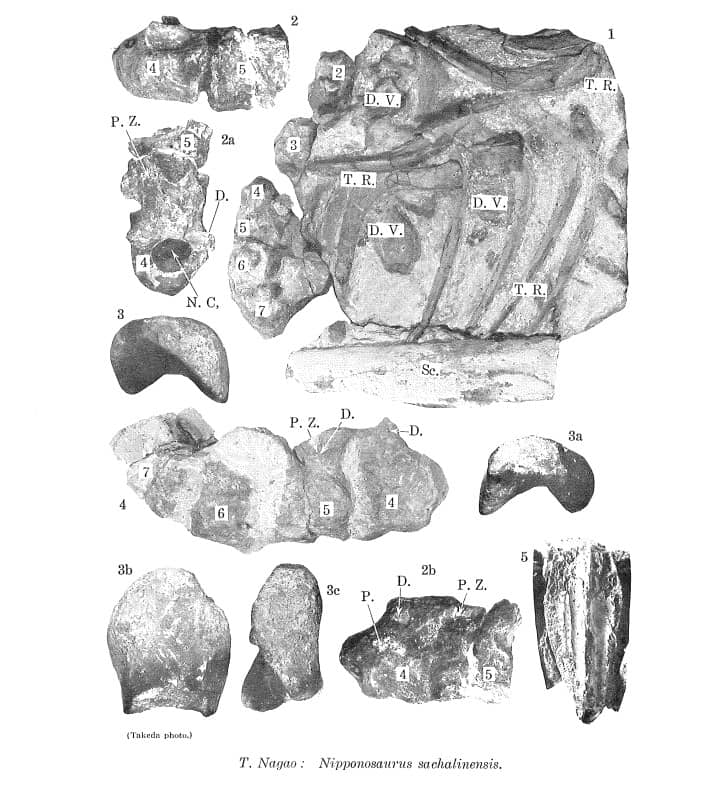About Nipponosaurus
| Scientific Name (Genus) | Nipponosaurus |
| Meaning of Name |
Japanese lizard
Nippon (Japan) [place name] - saurus (lizard) [Greek] |
| Classification | Ornithischia, Ornithopoda (Hadrosauridae, Lambeosaurinae) |
| Total Length | Approx. 4m |
| Diet | Herbivorous |
| Period | Late Cretaceous (approx. 80 million years ago) |
| Species | Nipponosaurus sachalinensis |
| Year of Paper Publication | 1936 |
| Genus Name Publication |
Nipponosaurus Sachalinensis : A New Genus and Species of Trachodont Dinosaur from Japanese Saghalien.
Journal of the Faculty of Science, Hokkaido Imperial University. Ser. 4, Geology and mineralogy, 3(2), 185-220. by Nagao, Takumi 1936. |
Features

The discovered specimen was about 4 meters long, but a 2017 study analyzing its bone tissue revealed that it was a young individual (subadult) that was still growing. It is estimated that if it had grown to full size, it would have reached a length of over 7.5 meters .
It had a hollow crest on the top of its head, characteristic of the Lambeosaurinae family. Detailed phylogenetic analysis has shown that Nipponosaurus is very closely related to dinosaurs such as Blasisaurus from Europe (Spain).
This fact provides very important biogeographical evidence that lambeosaurine dinosaurs were widely distributed and moved between Asia and Europe during the Late Cretaceous, possibly via land bridges such as the Bering Strait, which was then connected.

Discovery

Source: Nipponosaurus Sachalinensis : A New Genus and Species of Trachodont Dinosaur from Japanese Saghalien.
Journal of the Faculty of Science, Hokkaido Imperial University. Ser. 4, Geology and mineralogy, 3(2), 185-220.
by Nagao, Takumi 1936.
Nipponosaurus was discovered in 1934, before World War II, at a hospital construction site within the Kawakami coal mine facilities in Sakhalin, then Japanese territory (now Russian territory).
It was described in a paper in 1936 by Professor Takumi Nagao of Hokkaido Imperial University. It became the first dinosaur research paper by a Japanese person.
In 1937, further investigation was conducted at the same site, and fossils of the limbs were excavated.
However, due to the chaos of World War II, the fact that Sakhalin became Soviet territory, and the retirement of the leading researcher, Professor Nagao, the precious specimen of Nipponosaurus lay dormant in the collection of Hokkaido University for a long time with its details unknown. It was even considered a 'lost specimen' at one point.
In the 21st century, a new generation of researchers, including Dr. Yoshitsugu Kobayashi, 'rediscovered' this specimen and thoroughly re-examined it using the latest technology such as CT scans. As a result, the true form of Nipponosaurus and its scientific importance have come to light again after more than 80 years.
